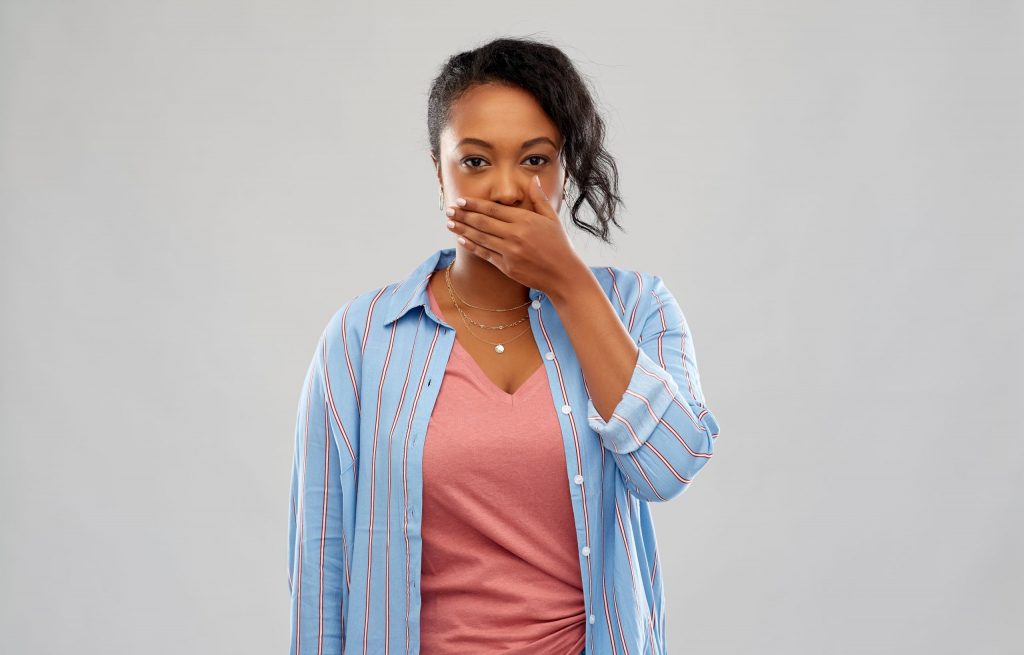If you’re worried your breath is less than fresh, you’re not alone. Studies report that 25% of people suffer from halitosis, more commonly called bad breath. But what causes bad breath, how can you tell if you have it, and how can you get rid of it? The answers may surprise you. Penn Dental Medicine has the information and sweet-smelling solutions you want.
What is Halitosis, and What Causes It?

Halitosis, commonly known as “bad breath,” is caused by an imbalance of bacteria in the mouth. Bacteria are naturally present, but when there are too many of certain types, such as Streptococcus mutans, they can cause plaque build-up. Bad breath can be a sign of tooth decay and gum disease.
Bacteria also produce volatile sulfur compounds (VSCs), which are responsible for the foul odor associated with halitosis. VSCs are produced naturally by the body, but certain foods and drinks can increase levels of VSCs in the mouth. These include alcohol, garlic, onions, coffee, tea, spicy foods, and smoked meats. Other factors include poor dental hygiene, smoking, diabetes, medication use, pregnancy, hormonal changes, and sinus problems.
How Can You Tell if You Have Bad Breath?
Dr. Mark Wolff, a restorative dentist at Penn Dental Medicine in Philadelphia, shares two easy ways to find out. “A popular and useful litmus test is to cup your hands over your nose and mouth, exhale and then inhale,” says Dr. Wolff. With that close proximity, you should be able to tell. The other method is to “Lick your hand a few times, wait a moment for the water to evaporate so that the odor molecules concentrate, then give the back of your hand a good sniff,” Dr. Wolff explains. “If what you smell makes you want to keel over, you may want to do something about it.”
What can you do? Fortunately, fresh breath can be restored with the help of these simple solutions.
How to Get Rid of Halitosis in 9 Easy Steps

- Brush and floss your teeth regularly. These good oral hygiene practices remove food particles from between your teeth, help keep plaque from building up, and reduce the risk of gum disease.
- Stay hydrated and rinse your mouth frequently. This helps flush out food particles and bacteria, and it gets rid of acid buildup. And it also keeps you from developing a dry mouth, which happens when saliva isn’t around to remove food particles and neutralize acids.
- Watch what you’re eating. Try to avoid sugary foods and drinks that can cause tooth decay. The same goes for items such as coffee, garlic, onions, and peppers with strong odors. Brushing and rinsing with water or mouthwash after these foods can help eliminate their smell. And, along with alcohol, these foods can also cause acid reflux, which causes you to burp up or regurgitate food into your esophagus and can lead to bad breath, among other health complications.
On the other hand, fruits and vegetables have natural antibacterial properties that fight harmful bacteria. And the pectin in apple peels keeps plaque from sticking to your teeth—all the more reason to include fruits and vegetables in your diet.
- Stop smoking. There are numerous health benefits to stopping smoking, and getting rid of bad breath can join the list. Not only does the nicotine in tobacco promote the growth of harmful bacteria that causes bad breath, but it can also lead to tooth decay and gum diseases.
- Scrape your tongue. Use your toothbrush or a tongue scraper to clean your tongue and remove bacteria.
- Chew sugar-free gum. This stimulates saliva and helps wash away bacteria, which can also reduce the risk of cavities.
- Use fluoridated toothpaste. Fluoride has antibacterial properties that can reduce the risk of bad breath.
- Keep dentures and other appliances clean. This removes bacteria buildup from use.
- Visit the dentist regularly. Twice-yearly dental cleanings and exams can help keep your mouth and breath healthy. It’s the perfect time to ask your dentist if you have concerns about your breath, especially if you are still suffering from chronic halitosis, regardless of the treatments you’ve tried. It’s also a time when an exam could help diagnose another underlying health condition causing your bad breath, such as acid reflux, sinus and tonsil issues, diabetes, kidney disease, or liver problems.
Blast Bad Breath with Philadelphia’s Penn Dental Medicine

Halitosis doesn’t stand a chance when you check in with us at Penn Dental Medicine. Our high-quality and affordable patient-centered care provided by our dentists, faculty, and students has made us one of the most trusted resources in the Philadelphia area.
So, if you’re wondering how to get rid of bad breath, don’t hesitate to schedule an appointment so we can help you breathe sweeter. And find out more about what you can expect from our care in this free download, Comprehensive Care and You: Penn Dental Medicine’s Dental Services. We look forward to seeing you soon.



